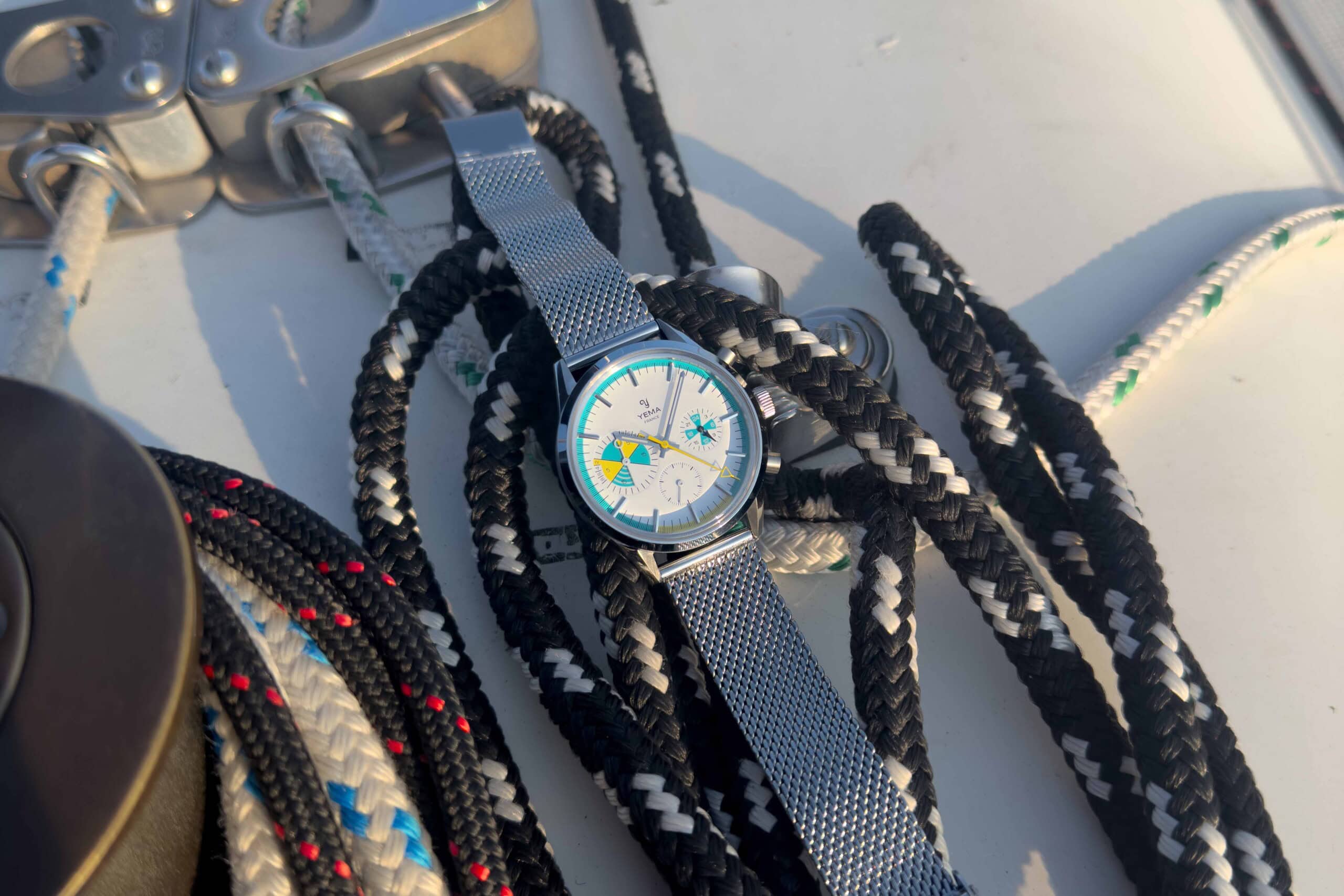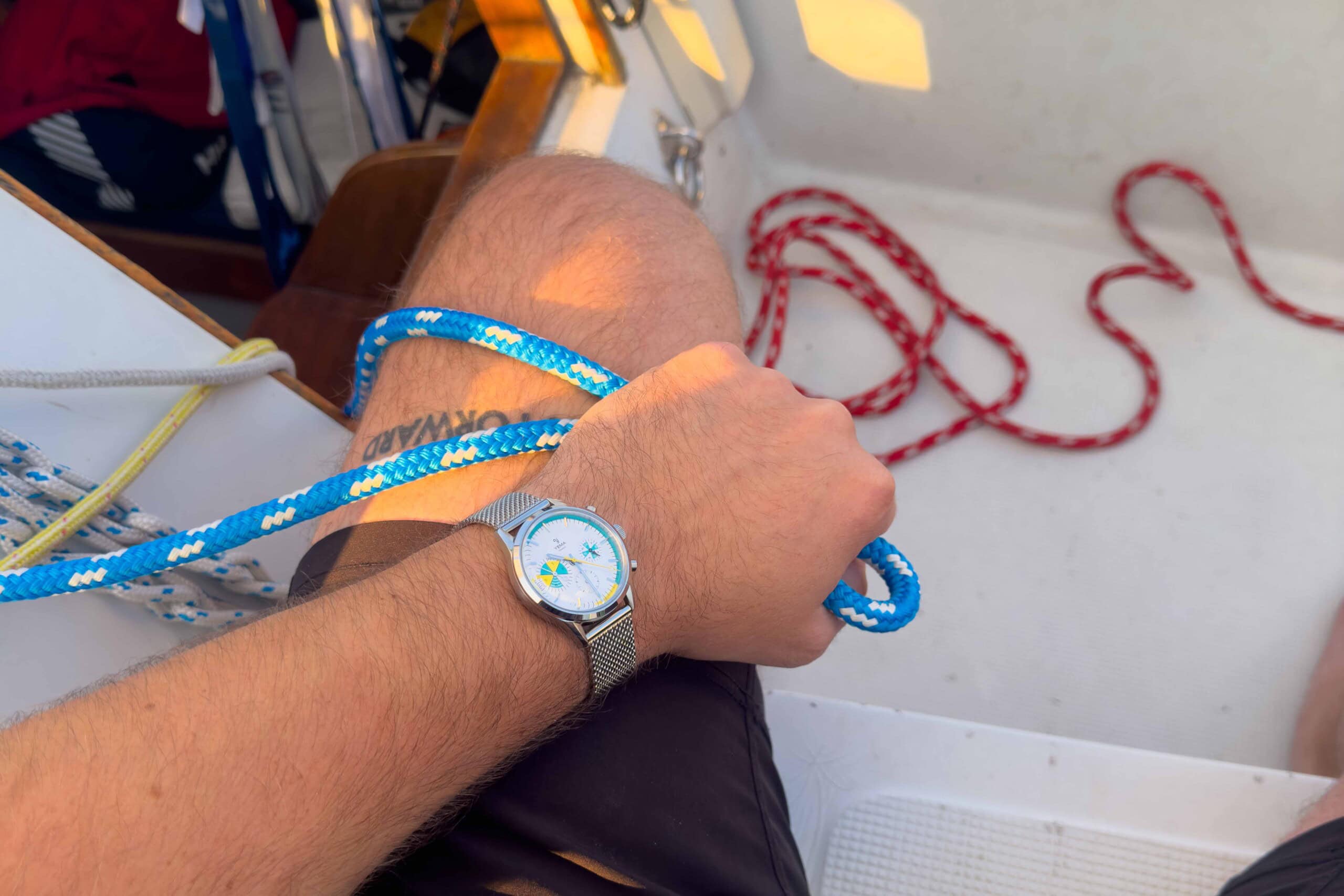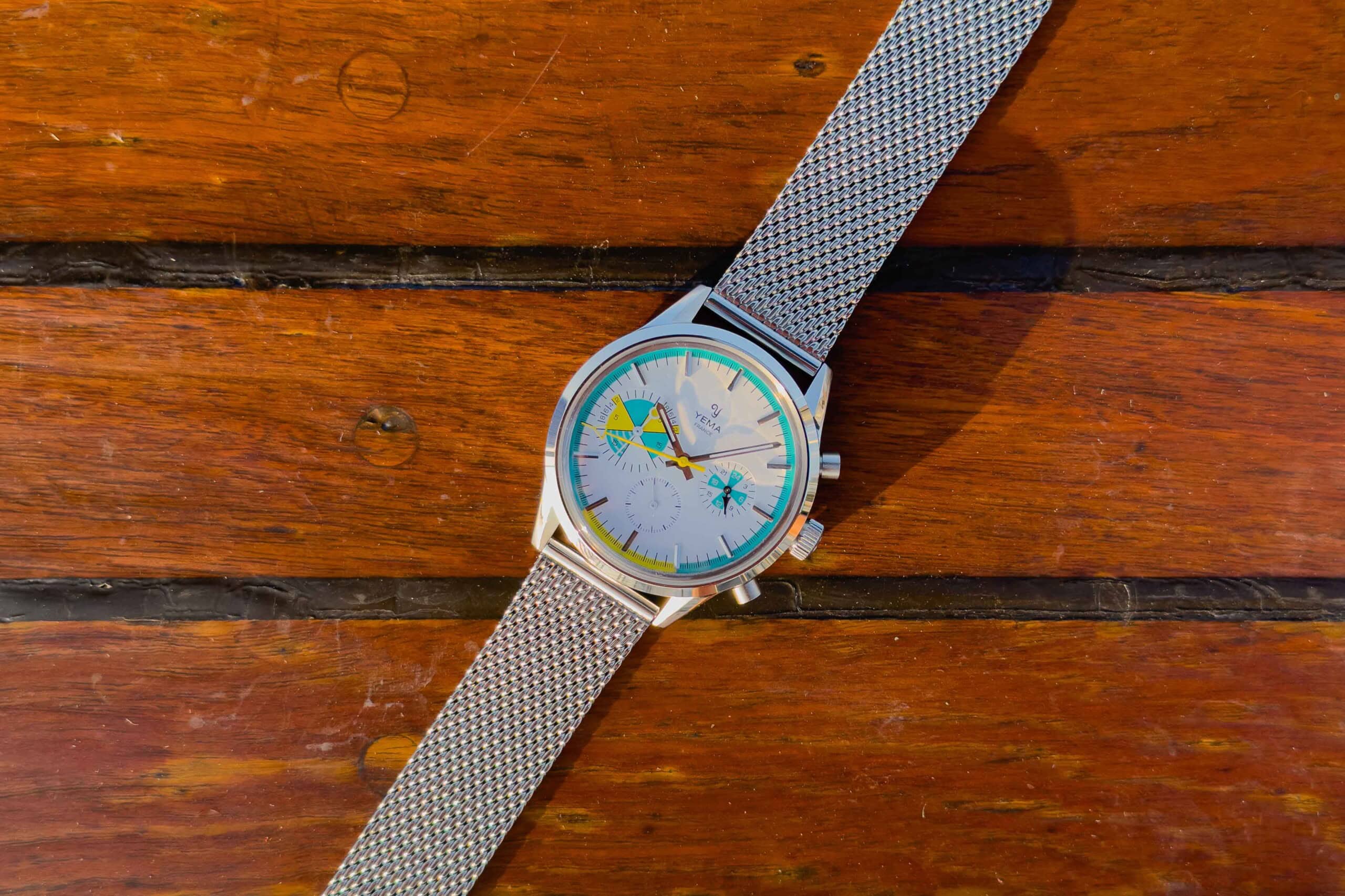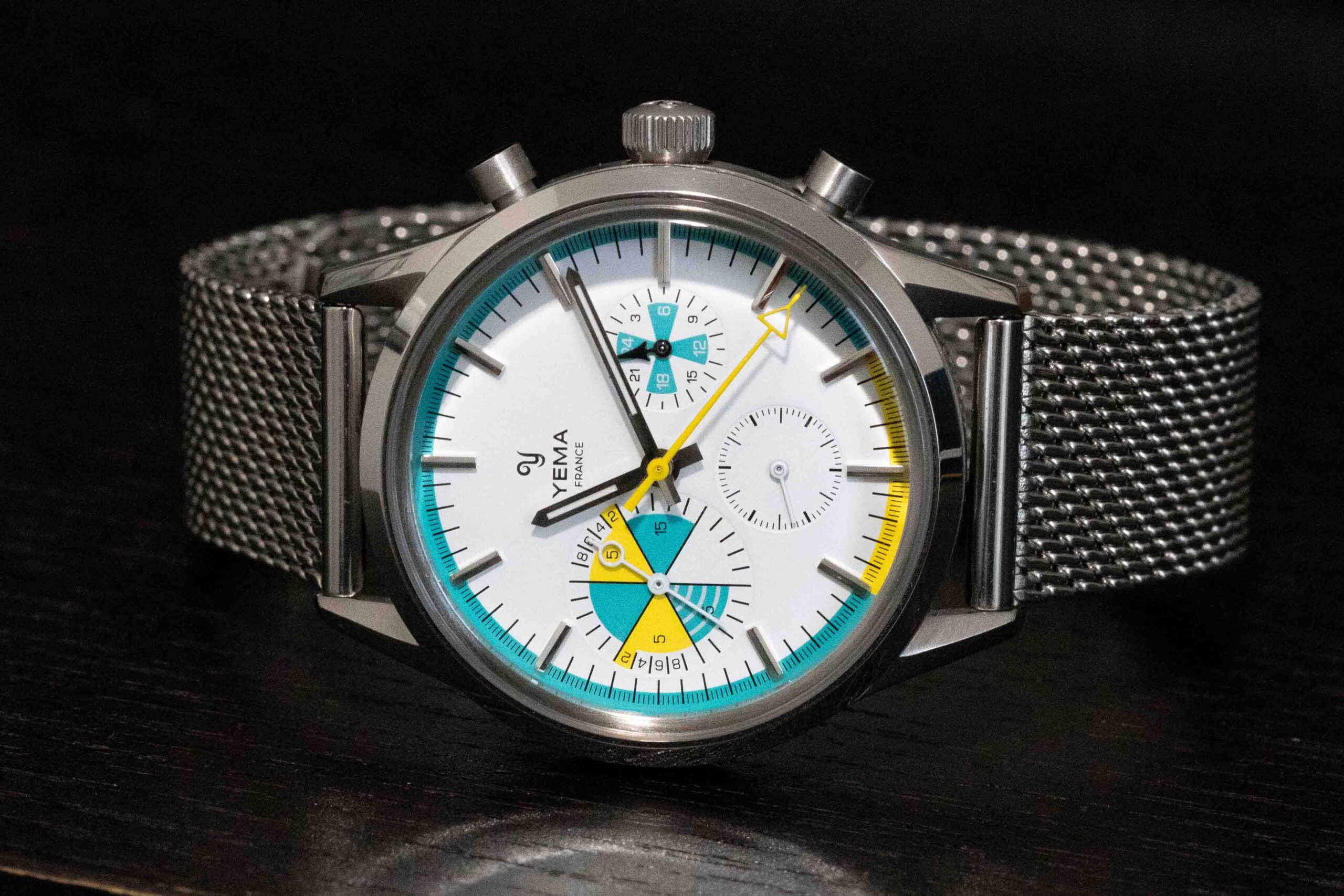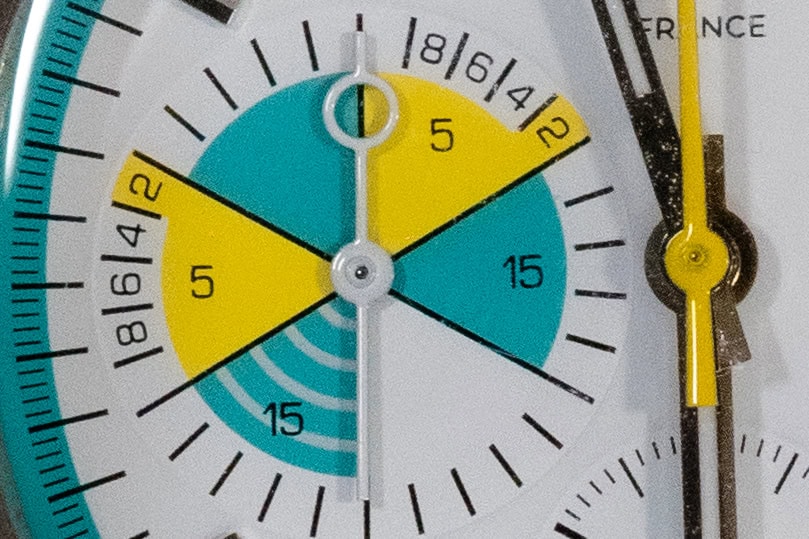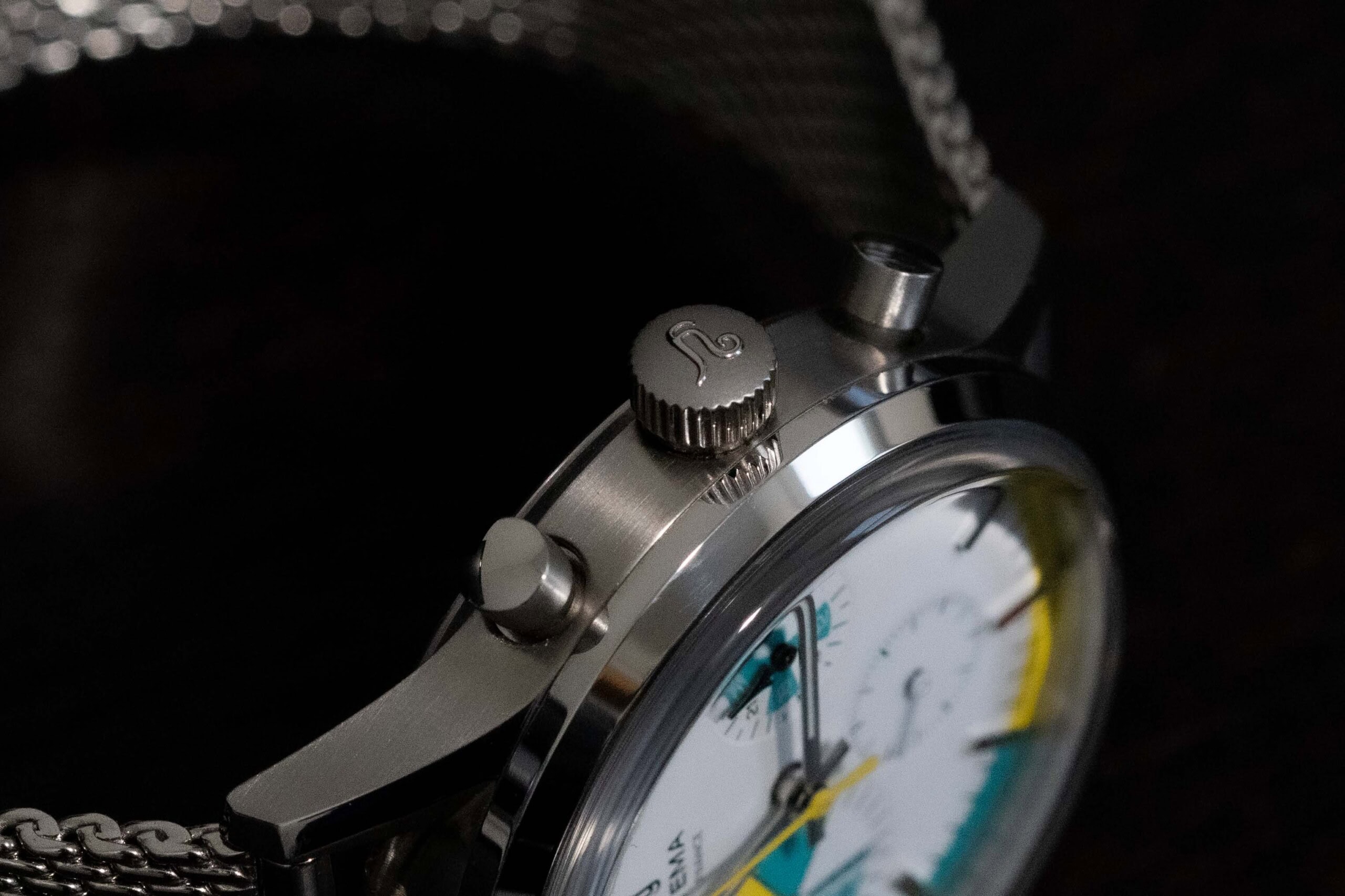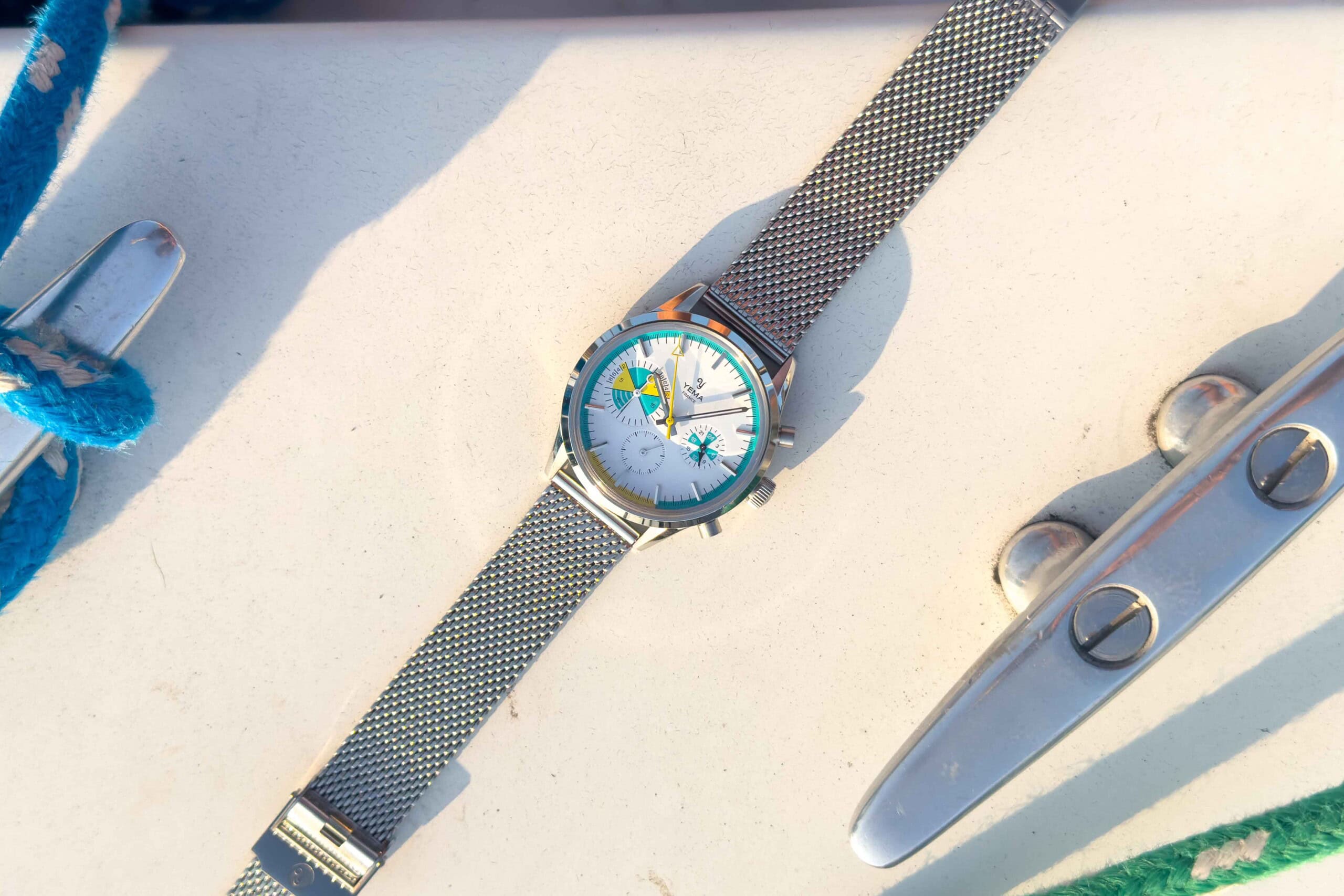As we begin jockeying for position behind the starting line aboard Escapade, an Ericson 29 sailing yacht, we hear the first warning siren blast and I immediately click in the top pusher. The skeletonized yellow arrow hand begins to tick away the seconds as ‘Cappy’ yells, “Ready to tack?!” Giving the green jib sheet two wraps on the winch with my left hand and taking the red jib sheet in my right, I yell back “Ready!” The boat starts to come over into the wind pushing the jib (the forwardmost sail) into the boat, across its bow, and onto the other side. During this, I allow the red line to slowly let out while beginning to pull in the green slowly, then, once the jib passes the midway point, I release the red all together and begin pulling in the green as fast as I can until the jib is fully under tension and our speed begins to climb. A glance down at the 9 o’clock big-eye register shows that we have three minutes to start, information I relay quickly as we begin to weave our way through the pack. Two minutes now, the call for a gybe, and another turn back towards the line. As our speed begins to build, the bow lunges closer to the start line fighting for a perfect start against the crowded pack of seasoned sailors while making sure not to cross too early. The siren blasts again, the big-eye circular hand hits zero, and we cross over the line in second place under wind at roughly four knots.
While it might seem to be an entirely useless complication for the masses, I just so happen to find myself onboard sailboats actively timing the start of a race frequently during the summer months. Now don’t get me wrong, I am not here to defend the regatta timer complication as “surprisingly useful.” However, the romance behind its intended purpose, the history of the complication, and of course, the unique dial layout still captivates me. So much so that when Yema used their Instagram account to tease what could have been the Yachtingraf, I audibly yelped and got the credit card ready. A short time later, the Yema Yachtingraf Croisière Meca-Quartz was announced in two colors, a white primary dial surface or dark blue, along with a choice between a leather strap or a steel mesh bracelet. Opting for the white dial reminiscent of a personal grail, the Abercrombie Seafarer, and paired with the mesh bracelet, I placed my order and patiently waited for its arrival.
Serendipitously, the Yachtingraf arrived on a Wednesday afternoon which meant that it would be immediately put to work during the standing Wednesday night race. The steel mesh was easy enough to size using a crimping clasp that slots into grooves on its underside. With the watch in place, I made my way to the yacht club and began to prep the boat. It was at this moment that I realized I had forgotten to check the watch’s water resistance which is thankfully etched into the caseback with a reassuring 10 BAR (or 100 meters). Sails rigged, instruments uncovered and set, bow and stern lines cast off, we pushed away from the dock and headed out for the race. Over the next little while, I took the Yachtingraf on several races, and a few random day sails, and wore it as an everyday watch to see if it could find a place in my everyday life.
Measuring in at 38.7mm on my calipers, the watch wears fairly true to size though presents a little larger than expected thanks to the extended pushers and 46.3mm lug-to-lug. With dimensions well suited for a wide variety of wrists, the case diameter is on the smaller side for my 7.67-inch wrist, though it never looks out of place. At 13.3mm thick with a double domed Hesalite crystal, it can easily slide under the cuff of your rain jacket or sunshirt. The main body of the case features fine vertical brushing and opts for polishing on the large bezel and lug tops. While it does provide an elevated look, it is a bit of an odd choice given the tool nature of the watch where scratches are inevitable. At 2 and 5, mushroom-style pump pushers operate the chronograph start/stop and the reset. Set between at 4 o’clock is the push/pull domed crown with well-cut grooves for grip and a blasted top surface backdropping the polished Yema “Y” logo. Flipping the watch over you are treated to a view of the screw-down case back with the Yema seal proudly embossed at its center, a nice touch given the more accessible price point.
Beneath the crystal lies the single biggest point of interest for me personally, the triple register regatta timer dial. At its perimeter, a teal semicircle interrupted between the 5 and 7 by a yellow section for no discernible reason holds the black minute track along with polished faceted hour markers. Just inside, a matte white dial backdrops the remaining dial details. The three sub-registers are stepped slightly into the dial with a big-eye regatta countdown timer at 9 o’clock, a running seconds indicator at 6 o’clock, and a twenty-four-hour dial at 3 o’clock giving away the movement housed within. At its center, polished sharpened pencil style hands with a small central application of lume handle hours and minutes with a completely yellow painted skeletonized arrow hand handling the chronograph complication. Legibility can be a bit tricky with this dial given the lesser contrast between yellow and white details. It is even harder when you realize that the second hand and the countdown timer hands are fairly small, thin, and painted white causing you at times to do a double take when trying in a hectic environment to learn how much time is left before the start. Regardless, this watch is meant to be fun and I think it nails that. The contrasting crosshair, use of color, and alternating colored countdown timer along with the overall color scheme just screams summer watch and finds itself right at home on the deck of a boat or back at the club.
Inside, the Seiko Meca-Quartz VK63 ticks away, a reliable albeit less expensive option that has found its way into no shortage of attainable chronograph offerings from small and large brands alike. In my use, the movement seems to be keeping fine time, however I have noticed that the “running” seconds seem to be doing an awful lot of skipping. Being the hybrid Meca-Quartz movement, the chronograph complication is operated by a mechanical component that lends a more consistent sweep to the yellow chronograph hand while also providing a satisfying click upon actuation. Using the chronograph feature will drain the 3-year battery a bit faster, so maybe it is a good thing that you probably won’t be using it as often as a traditional chronograph.
Ultimately, I have really enjoyed my time with the new Yema Yachtingraf Croisière Meca-Quartz. Despite the called-out twisted lyre lugs, the finishing overall looks a bit more basic than I would have liked to have seen, though is completely understandable given the sub-$400 price point. The steel mesh bracelet is a nice touch but may be a little hard to justify the $30 bump in price over the standard color-matched leather option. If asked, I would have also told Yema to stay away from the Croisière moniker as this model feels like a bit of a far cry from the sought-after vintage big-eye references. That name carries significant sailing lore along with a distinct visual look that this model does not achieve. But if you remove that from the equation and just look at what is on offer here, you have a fairly affordable and fun summer watch that could be useful in certain circumstances that make you want to get out on the water. We have seen a few regatta or yacht timers come out recently all firmly landing in the luxury or unobtainable sector of the market. It is refreshing to see a brand take the idea and bring it to the masses. There is a good chance that you will still see this watch pop up in my Instagram stories on the random Wednesday when the mood strikes and I am ready to bring that vintage vibe to the nostalgic watersport. Yema









 Featured Videos
Featured Videos




